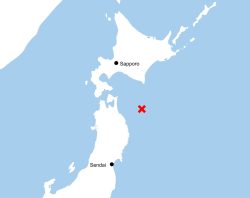- Yomiuri Editorial
- Sri Lanka
Concerns grow over ‘Chinese ports’ developed overseas through debt traps
13:05 JST, August 18, 2022
It can be said that concerns about China’s military use of other countries’ ports and other facilities in exchange for its economic assistance to developing countries are becoming a reality.
A Chinese survey ship has docked at the port of Hambantota in southern Sri Lanka.
The ship belongs to an organization affiliated with the Chinese military and has the ability to track and monitor with high-performance radars such things as satellites, rockets and ballistic missiles.
China describes the ship as a maritime research vessel and claims that it “does not affect the security or economic interests of any country.” However, given that the survey ship belongs to the military, it may be clear that the port call is part of a military operation.
It is quite natural that Sri Lanka’s neighbor India is concerned about its military activities being monitored by China. The Indian media is calling the vessel a “spy ship.” A Chinese ship’s port call could become another flash point in the China-India conflict.
Located in the Indian Ocean, which connects Asia with the Middle East and Europe, Sri Lanka is a hub for sea-lanes that carry crude oil and other materials. For Japan, the United States, Australia and India, which advocate a “free and open Indo-Pacific,” China’s moves undermining regional stability cannot be overlooked.
The port of Hambantota was developed through Chinese investment as part of China’s Belt and Road Initiative to create a huge economic bloc. Struggling to repay its massive debts, Sri Lanka transferred the operating rights of the port to a Chinese company, effectively turning it into a “Chinese port.”
The reason Sri Lanka allowed the Chinese ship to call at the port despite India’s prior opposition may have been that Sri Lanka could not resist pressure from China against the backdrop of its moves to expand its interests in the country.
Sri Lanka’s economic crisis continues. In July, antigovernment protests spread and a pro-China president was ousted. China has been reluctant to offer debt relief or other assistance during this time.
This situation highlights the fact that China’s huge amounts of aid and investment are mainly used to increase its own influence, not for the development of the other country.
It is not only Sri Lanka that has fallen into a “debt trap,” in which developing countries are saddled with debts and China obtains the rights to use local infrastructure. In neighboring Pakistan, Bangladesh and Myanmar, too, ports are being developed with Chinese funds. Countries should be more vigilant.
China has defended the Russian invasion of Ukraine and is also changing the status quo by violating its boundaries with Taiwan. It is far from being a major power that leads the stability of international politics and the global economy.
Japan and the United States continue to provide aid that contributes to the development and growth of human resources in other countries. The two nations need to promote their highly transparent assistance to developing countries.
(From The Yomiuri Shimbun, Aug. 18, 2022)
"Editorial & Columns" POPULAR ARTICLE
-

Violations of Subcontract Law: Major Automakers Must Eliminate Old Practices
-

Local Governments’ Tax Revenues: Devise Ways to Correct Imbalances in Tax Sources
-

Heavy Rains in Asia: Support for Victims, Flood-Control Measures Urgently Needed
-

5 Japanese Business Dinner Mistakes to Avoid — and What They Taught Me About Business in Japan
-

New Nuclear Threat: China Seeking to Follow U.S., Russia in Military Expansion
JN ACCESS RANKING
-

Japan’s Hopes for Seafood Exports Shot Down in China Spat
-

Essential Services Shortage to Hit Japan’s GDP By Up to ¥76 Tril. By 2040
-

Japan to Charge Foreigners More for Residence Permits, Looking to Align with Western Countries
-

Japan Exports Rise in October as Slump in U.S. Sales Eases
-

Niigata Gov. to OK Restart of N-Plant; Kashiwazaki-Kariwa May Be Tepco’s 1st Restarted Plant Since 2011























